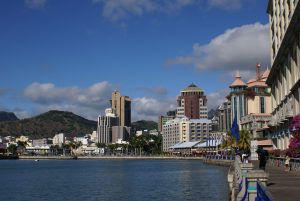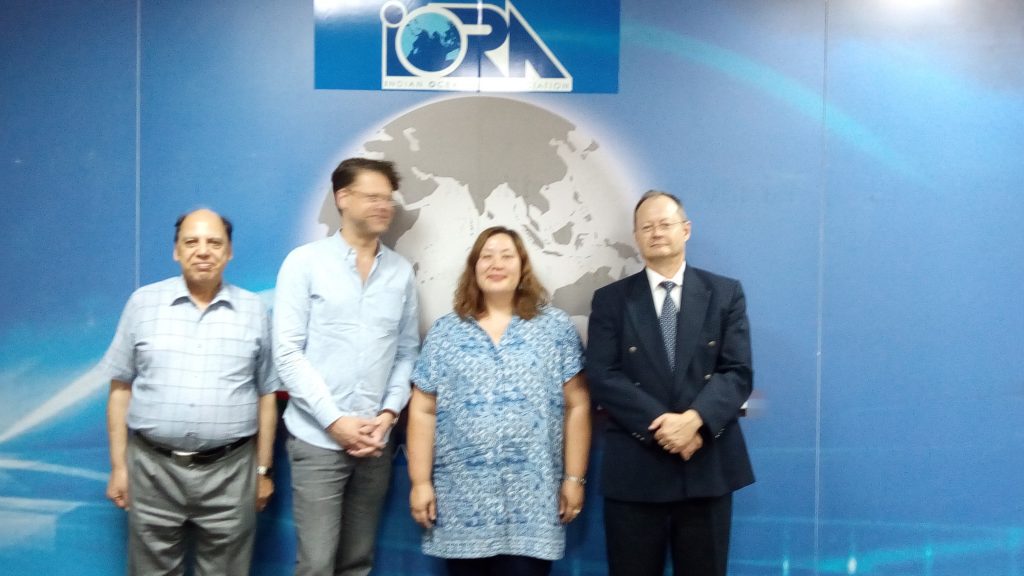 The Indian Ocean Rim Association intends to strengthen regional cooperation among the Indian Ocean littorals. For long it has been a sleeping beauty. But it was kissed awake in the last years, and now becomes an increasingly active and visible player in several priority areas. Among them: Maritime security and safety, fishery management and the blue economy. IORA promises to become a core player in ocean governance. In particular, the emerging issues areas of maritime security and the blue economy continue lack international fora; a gap that IORA can fill on a regional level. Today I had the pleasure to discuss the work of IORA at the Secretariat’s headquarters in Mauritius’ cyber city. IORA continues to operate with a small secretariat with no more than twelve permanent staff members. The secretariat approach is fully service oriented and it offers its expertise and organizational support to projects and proposals of member states which it implements through a Special Fund. On this basis, the IORA secretariat has organized an impressive range of 30 events throughout 2016, including a blue economy conference. Continue reading
The Indian Ocean Rim Association intends to strengthen regional cooperation among the Indian Ocean littorals. For long it has been a sleeping beauty. But it was kissed awake in the last years, and now becomes an increasingly active and visible player in several priority areas. Among them: Maritime security and safety, fishery management and the blue economy. IORA promises to become a core player in ocean governance. In particular, the emerging issues areas of maritime security and the blue economy continue lack international fora; a gap that IORA can fill on a regional level. Today I had the pleasure to discuss the work of IORA at the Secretariat’s headquarters in Mauritius’ cyber city. IORA continues to operate with a small secretariat with no more than twelve permanent staff members. The secretariat approach is fully service oriented and it offers its expertise and organizational support to projects and proposals of member states which it implements through a Special Fund. On this basis, the IORA secretariat has organized an impressive range of 30 events throughout 2016, including a blue economy conference. Continue reading
Category Archives: In the field
Field Visit to Mauritius
As part of my ESRC funded project “Improving the Coordination of Maritime Security in the Western Indian Ocean” I am visiting Mauritius from the 15th to 20th of December. I am scheduled to meet with representatives from the Indian Ocean Commission (IOC), the Indian Ocean Rim Association (IORA), the University of Mauritius and other maritime experts. The goal of the visit is to gain a better understanding of how the coordination of capacity building activites in the region can be improved in particular in the light of the significant overlap between the CRIMARIO and MASE projects as well as bilateral work.
On the road to the AU’s maritime charter: Event in Addis
How will the Lome Charter that is going to be adopted at the African Union’s extraordinary summit in October this year will change ocean governance on the continent? This is the core question that we will be exploring at an event in Addis Ababa organized by the Institute for Security Studies. The event titled “From awareness to action: Africa’s blue economy after Lomé” takes place on September 29th. Please see further information here. In my talk, I will emphasize the need of thinking the blue economy, ocean health, and maritime security agendas together and focussing on those activities that can benefit each agenda. Drawing on my current work on the relation between these agendas, I will argue that maritime domain awareness and information sharing, joint law enforcement operations, and education should be priority areas for the next years. In these areas, significant synergies between all three agendas can be achieved. Knowing what happens at sea and ensuring the flow of information between all actors relevant is the necessary background for designing policies and projects to better protect the seas and develop them. Given the vastness of the sea and the resource limitations actors will have to learn how to work together in policing the sea. Education is pivotal for increasing the awareness of the vital importance of the sea for the future of the continent and training the practitioners which will be able to implement the agendas.
Visiting Brussels
From the 12th to the 14th of June I am scheduled for Brussels. On the agenda is first a briefing at NATO HQ on the upcoming NATO Summit. I am in particular interested how NATO will continue its maritime security work. 2016 is a transformative year, it is expected that NATO’s Operation Ocean Shields will end this year, there is a growing discussion of what NATO’s role could be in tackling the human trafficking problem in the Mediterranean and how such work could be linked to Operation Active Endeavour, and the opreationalization of the Alliance Maritime Strategy still lack progress. On the second day I am acting as reviewer for an European Commission funded FP7 project. The project titled IPATCH intends to develop early detection mechanisms for piracy and as such might assist in strengthening maritime domain awareness.
CGPCS Plenary Meeting in the Seychelles
 The Contact Group on Piracy off the Coast of Somalia – the global governance body which I have been studying closely in my ESRC funded Counter-Piracy Governance project – is soon to hold its next plenary meeting. Organized by the current chairmen, the Government of Seychelles, the four day meeting will be held in the Seychelles from the 29th to the 3rd of June. I will be participating as an observer, but also give two presentations during the meeting. In the first presentation I will provide an update of the lessons learned work I have been doing for the group, and in the second discuss the future of the group on the basis of a recent paper. I will report on the event on the website of the group which is available here.
The Contact Group on Piracy off the Coast of Somalia – the global governance body which I have been studying closely in my ESRC funded Counter-Piracy Governance project – is soon to hold its next plenary meeting. Organized by the current chairmen, the Government of Seychelles, the four day meeting will be held in the Seychelles from the 29th to the 3rd of June. I will be participating as an observer, but also give two presentations during the meeting. In the first presentation I will provide an update of the lessons learned work I have been doing for the group, and in the second discuss the future of the group on the basis of a recent paper. I will report on the event on the website of the group which is available here.
CGPCS Strategy Meeting in Mumbai
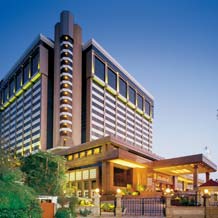 To prepare for its 19th plenary, the Contact Group on Piracy off the Coast of Somalia held a strategy meeting on the 1st of February in Mumbai, India. The one day meeting was primarily to take stock about activities and progress since the last meeting in July 2015, and to think ahead and identify the issues that require further scrutiny. A crucial part of the discussion is also the question of how the group should be maintained or transformed. I attended the one day meeting as an observer as part of the CGPCS Lessons Learned Project and my ESRC project on Counter-Piracy Governance. A short summary on the meeting will be published on the CGPCS website.
To prepare for its 19th plenary, the Contact Group on Piracy off the Coast of Somalia held a strategy meeting on the 1st of February in Mumbai, India. The one day meeting was primarily to take stock about activities and progress since the last meeting in July 2015, and to think ahead and identify the issues that require further scrutiny. A crucial part of the discussion is also the question of how the group should be maintained or transformed. I attended the one day meeting as an observer as part of the CGPCS Lessons Learned Project and my ESRC project on Counter-Piracy Governance. A short summary on the meeting will be published on the CGPCS website.
The G7 High Level Meeting on Maritime Security
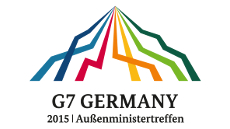 On December 14th the G7 held a High Level Meeting on Maritime Security under the presidency of Germany. The meeting titled “Enhancing Maritime Security – Connecting Regions – Governing the Commons was a follow up to the Lübeck Declaration on Maritime Security of the G7 Foreign Ministers from April this year. At the one day event over 150 experts discussed four vital themes in maritime security: Maritime domain awareness and information sharing, maritime dispute settlement, illegal fishing, and the role of regional organizations in the provision of maritime security. I had the pleasure to participate in the meeting and chair the roundtable on regional organizations. The roundtable featured representatives from the International Maritime Organization, the Indian Ocean Rim Association, as well as the government of Togo which is currently organizing a major African Union summit on the theme. In the closing discussion I presented a summary of the roundtable themes. I stressed four vital points for furthering the discussion on maritime security.
On December 14th the G7 held a High Level Meeting on Maritime Security under the presidency of Germany. The meeting titled “Enhancing Maritime Security – Connecting Regions – Governing the Commons was a follow up to the Lübeck Declaration on Maritime Security of the G7 Foreign Ministers from April this year. At the one day event over 150 experts discussed four vital themes in maritime security: Maritime domain awareness and information sharing, maritime dispute settlement, illegal fishing, and the role of regional organizations in the provision of maritime security. I had the pleasure to participate in the meeting and chair the roundtable on regional organizations. The roundtable featured representatives from the International Maritime Organization, the Indian Ocean Rim Association, as well as the government of Togo which is currently organizing a major African Union summit on the theme. In the closing discussion I presented a summary of the roundtable themes. I stressed four vital points for furthering the discussion on maritime security.
The Luebeck declaration already highlighted the importance of the global oceans for economic prosperity. Further elaborating the link between maritime security and the blue economy is vital for promoting security at sea. If maritime security stands for the risks presented by the oceans, the blue economy emphasizes its opportunities. Recognizing the economic potential of the sea will enable to address the problem known as “sea blindness” and to present a convincing case to national publics, governments and states, including landlocked states, that maritime security is a priority area that needs investment and the will to cooperate.
Maritime security does not have a clear institutional home. It is an Inter-agency challenge and requires military-civil and inter-sectional cooperation. Stronger institutions at the country, regional as well as global level are required. But there is also the need to better clarify roles and responsibilities of each level. Country ownership is vital, yet, maritime security is a transnational challenge and many states will require assistance through capacity building and technology transfer from the international community. The G7 will continue to play an important role in driving the discussion on the global maritime security architecture forward and clarifying the rules and responsibilities of different national, regional and global institutions.
If maritime security requires better cooperation between states, trust and confidence building mechanisms, in particular at the regional level, are the key. There is clear evidence for the importance of mechanisms which include, but are not limited to, informal governance processes, such as the Contact Group on Piracy off the Coast of Somalia, Codes of Conduct, such as those signed in Djibouti and Yaounde, joint exercises, but also intra-regional transfer of skills and technology, through capacity building, training, education and research. These mechanisms should be strengthened to build regional maritime security communities.
The fight against piracy is not over yet. Both the Gulf of Guinea and the situation in the Gulf of Aden will require continued attention and sustained efforts of the international community. The regional maritime security architecture in both regions will need to be strengthened. The participants welcomed the financial contribution of Germany for the implementation of the Yaounde Code of Conduct and the efforts of the government of Togo in preparing the Lome Summit on maritime security and development. In particular the Lome Summit of the African Union to be held next year will be an important milestone for African maritime security and ensuring that all forms of maritime crime in the continents waters will be effectively addressed.
The participants welcomed the strong leadership of the G7. The Luebeck declaration presented an important step for the discourse on maritime security. It was, however, emphasized that if the 21st century is a maritime century, the current discussion can only be the beginning. Sustained efforts in particular on elaborating the future of the global maritime security governance architecture will be required and the dialogue among maritime security experts, including university based scholars, needs to be intensified.
Sri Lanka’s Galle Dialogue
 From the 23rd to the 24th November I attended the Galle Dialogue 2015, held in Galle, Sri Lanka. The Galle Dialogue is a major international multilateral meeting of navies in the Indian Ocean. Organised by the Sri Lankan navy, the dialogue attracted this year 300 participants from over 37 nations. The sixth installment of the dialogue, focussed on the theme “Secure seas through greater maritime cooperation”. The conference was opened by the prime minister of Sri Lanka, and included, among others, presentations by India’s chief of naval staff, Nigeria’s chief of naval staff, the deputy chief of staff from the Pakistan Navy, the State Minister of Defense of Sri Lanka, as well as representatives of UNHCR, IOM, and UNODC. The first day focussed on the contributions of different navies to maritime security in the Indian Ocean, while on the second day the issue of migration and international corporation to tackle ocean borne crime were discussed. As the only academic presenting at the conference, I discussed in my lecture the relationship between maritime security and the blue economy, and how more cooperative ocean governance structures might be set up. I drew on the results of the lessons learned project of the Contact Group on Piracy off the Coast of Somalia as well as my ongoing ESRC funded project on maritime security governance. Further information on the Galle Dialogue, including the full program, papers, and videos, is available here.
From the 23rd to the 24th November I attended the Galle Dialogue 2015, held in Galle, Sri Lanka. The Galle Dialogue is a major international multilateral meeting of navies in the Indian Ocean. Organised by the Sri Lankan navy, the dialogue attracted this year 300 participants from over 37 nations. The sixth installment of the dialogue, focussed on the theme “Secure seas through greater maritime cooperation”. The conference was opened by the prime minister of Sri Lanka, and included, among others, presentations by India’s chief of naval staff, Nigeria’s chief of naval staff, the deputy chief of staff from the Pakistan Navy, the State Minister of Defense of Sri Lanka, as well as representatives of UNHCR, IOM, and UNODC. The first day focussed on the contributions of different navies to maritime security in the Indian Ocean, while on the second day the issue of migration and international corporation to tackle ocean borne crime were discussed. As the only academic presenting at the conference, I discussed in my lecture the relationship between maritime security and the blue economy, and how more cooperative ocean governance structures might be set up. I drew on the results of the lessons learned project of the Contact Group on Piracy off the Coast of Somalia as well as my ongoing ESRC funded project on maritime security governance. Further information on the Galle Dialogue, including the full program, papers, and videos, is available here.
Maritime Domain Awareness in Action: Visiting the UK’s NMIC
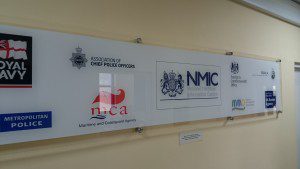 Continuing my tour to centres which share and fuse information in order to enhance maritime security, two weeks ago, I had the opportunity to visit the UK’s National Maritime Information Centre, in short: NMIC. The center is located near Portsmouth, a place it moved to last year in September, having been based prior within the Royal Navy’s headquarters in Northwood. The centre itself was created in 2011 in the run up to the London Olympics. Initial it was meant to facilitate the protection of the UK against threats from the sea during the event. The core idea behind the centre is hence that the rapid response to emergencies at sea is enhanced through a shared information infrastructure. Yet, the work of the center was soon extended to focus on improving the information available for regular law enforcement in ports, coastlines and the country’s Exclusive Economic Zone. All of the ten ministries and agencies of the UK that deal with the sea are participating in the centre whose role is to facilitate conversations and joint actions among these.
Continuing my tour to centres which share and fuse information in order to enhance maritime security, two weeks ago, I had the opportunity to visit the UK’s National Maritime Information Centre, in short: NMIC. The center is located near Portsmouth, a place it moved to last year in September, having been based prior within the Royal Navy’s headquarters in Northwood. The centre itself was created in 2011 in the run up to the London Olympics. Initial it was meant to facilitate the protection of the UK against threats from the sea during the event. The core idea behind the centre is hence that the rapid response to emergencies at sea is enhanced through a shared information infrastructure. Yet, the work of the center was soon extended to focus on improving the information available for regular law enforcement in ports, coastlines and the country’s Exclusive Economic Zone. All of the ten ministries and agencies of the UK that deal with the sea are participating in the centre whose role is to facilitate conversations and joint actions among these.Summary of 18th CGPCS Plenary
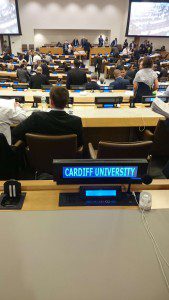 Last week I attended the plenary of the CGPCS at the UN headquarters. I published summaries of the main discussions of the working group meetings and the plenary on the website of the CGPCS. Find them published here. For the first time the plenary has also been recorded and is available on UN web tv (part 1, part 2). During the plenary I gave an update on the Lessons Learned Project and also presented our forthcoming article on the future of the maritime security architecture in the Western Indian Ocean.
Last week I attended the plenary of the CGPCS at the UN headquarters. I published summaries of the main discussions of the working group meetings and the plenary on the website of the CGPCS. Find them published here. For the first time the plenary has also been recorded and is available on UN web tv (part 1, part 2). During the plenary I gave an update on the Lessons Learned Project and also presented our forthcoming article on the future of the maritime security architecture in the Western Indian Ocean.
